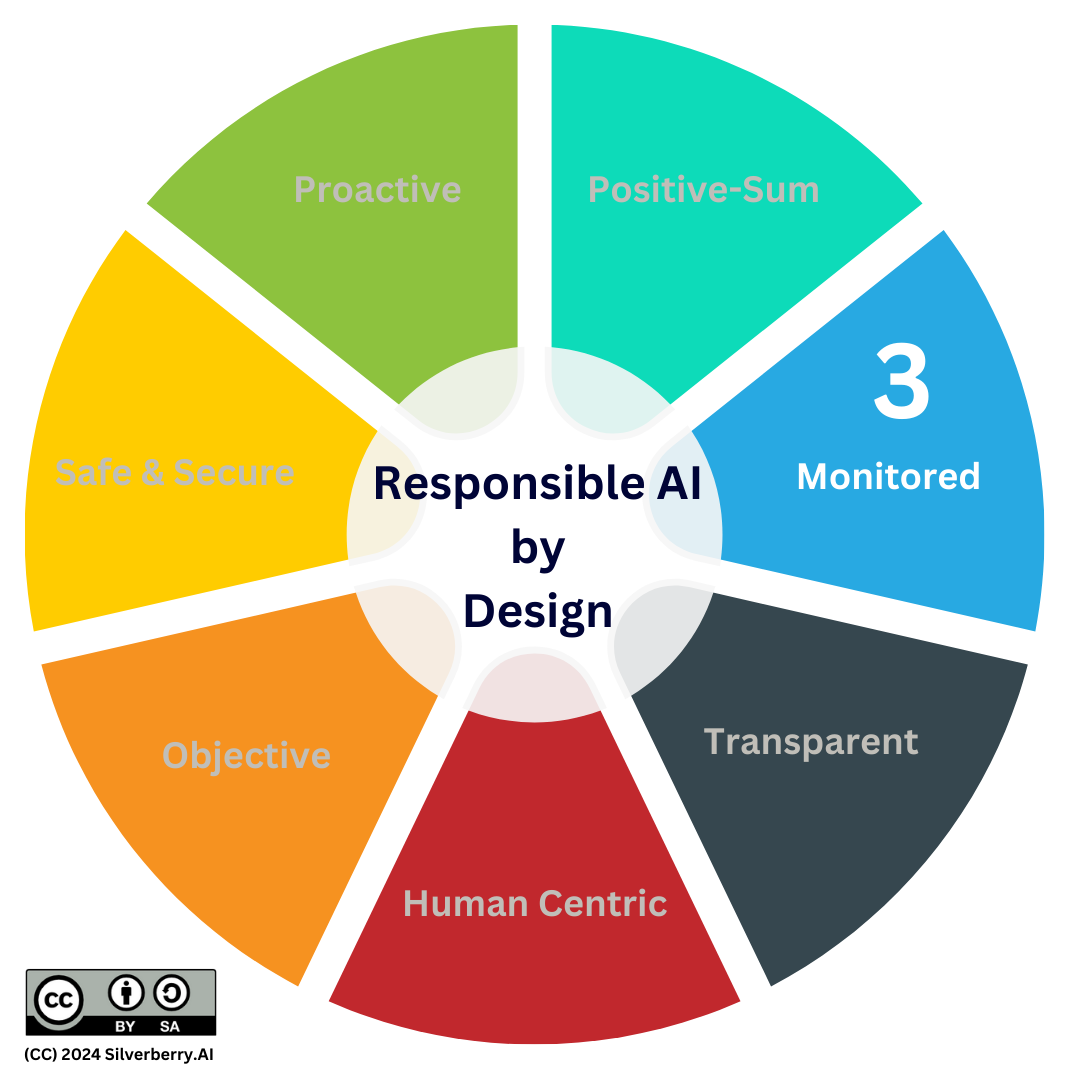
Responsible AI, Principle 1: Proactive, Embedded in Design, and Default Settings
In the Responsible AI by Design Framework, the principle of Proactive, Embedded in Design, and Default Settings serves as the bedrock for ensuring that no harmful or unethical outcomes emerge unnoticed.

Responsible AI, Principle 2: Full Functionality — Positive-Sum, Not Zero-Sum
The Responsible AI by Design Framework advocates solutions that do not force a trade-off between ethical obligations and productive outcomes. Often, organizations perceive ethics or fairness as constraints that dampen innovation or reduce system performance.

Responsible AI, Principle 3: End-to-End Responsibility — Full Lifecycle Protection
In many traditional AI or software development lifecycles, the main focus is on building and launching products swiftly. The risk is that ethical, regulatory, or security considerations become afterthoughts. The End-to-End Responsibility — Full Lifecycle Protection principle addresses this gap by requiring that responsibility measures be integrated at each phase of AI existence.

Responsible AI, Principle 4: Visibility, Transparency, and Explainability — Keep it Open
Historically, many AI systems have operated as “black boxes,” making decisions and predictions without offering much clarity to end-users, regulators, or even the developers themselves. In the Responsible AI by Design Framework, Visibility, Transparency, and Explainability counteracts this secrecy by demanding that AI processes, data usage, and outcomes remain open to scrutiny.

Responsible AI, Principle 5: Human-Centric Feedback and Iteration
Within the Responsible AI by Design Framework, Human-Centric Feedback and Iteration emphasizes that technology should never supplant human insight, empathy, and ethical reasoning. While AI can efficiently process vast amounts of data and make rapid predictions, it lacks the nuanced understanding of context, morality, and lived experiences that human beings bring to decision-making.

Responsible AI, Principle 6: Maintain AI Objectivity — No Artificial Introduction of Bias
Within the Responsible AI by Design Framework, Maintain AI Objectivity — No Artificial Introduction of Bias highlights the critical need to keep AI systems free from subjective agendas. While many organizations strive for fairness in their algorithms, certain complexities arise when deciding whether to mitigate historic inequalities, address social disparities, or pursue specific policy outcomes.

Responsible AI, Principle 7: Prioritize Privacy, Security, and Safety
Within the Responsible AI by Design Framework, Maintain AI As AI systems become more powerful, the potential for misuse, exploitation, or unintentional harm grows. The Prioritize Privacy, Security, and Safety principle tackles these concerns head-on, insisting that robust defensive measures be at the core of every AI endeavor.
